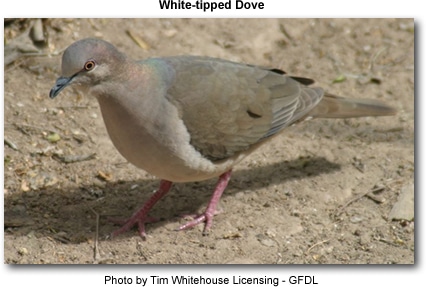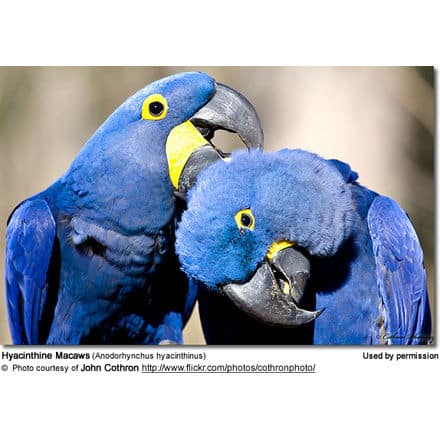White-tipped Doves
The White-tipped Doves (Leptotila verreauxi) is a large New World tropical dove. The scientific name of this bird commemorates the French naturalists Jules and Edouard Verreaux.
The genus Leptotila was already described, but this particular species was named after Jules Verreaux who was an expert on exotic birds and was a principal at Maison Verreaux – the foremost supplier of natural history specimens in the early to mid 1800’s.
The name is a latinized version of the French name Verreaux. Its pronunciation is Lepto tilla very oxi where the “o” would sound like the o in “oval” or as in “boat”
Further Dove Information
- Dove Information
- Index of Dove Species
- Photos of the Different Dove Species for Identification
- Doves & Pigeons as Pets
Distribution / Habitat:
It is a resident breeder from the southernmost Texas in the USA through Mexico and Central America south to western Peru and central Argentina. It also breeds on the offshore islands of northern South America, including Trinidad. The nominate race L. v. verreauxi is the form found in most of the extensive range, but L. v. tobagensis is endemic to Tobago.
The White-tipped Dove inhabits scrub and open woodland.
Nesting:
It builds a large stick nest in a tree and lays two white eggs. Incubation is about 14 days, and fledging another 15.
Description:
White-tipped Doves are 28cm long and weigh 155g. Adult birds have a grey crown and neck, the latter showing purple iridescence. They have a pale grey or whitish forehead and a whitish throat. The eye-ring is blue. The upperparts and wings are grey-brown, and the underparts are whitish shading to pink on the belly. The tail is broadly tipped with white. The bill is black and the legs red.
L. v. tobagensis has paler underparts, a whiter throat, and lacks the sheen on the nape.
The White-tipped Dove is very similar to the closely related Grey-fronted Dove, Leptotila rufaxilla, which prefers humid forest habitats. The best distinctions from Grey-fronted Dove are the greyer forehead and crown, and the blue eyering.
White-tipped Dove is usually seen singly or in pairs and is rather wary. Its flight is fast and direct, with the regular beats and clattering of the wings which are characteristic of pigeons in general.
Call / Song:
The food of this species is mainly seeds obtained by foraging on the ground, but it will also take insects, including butterflies and moths. The call is a deep hollow ooo-wooooo.






